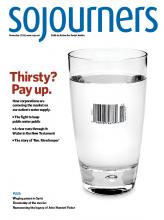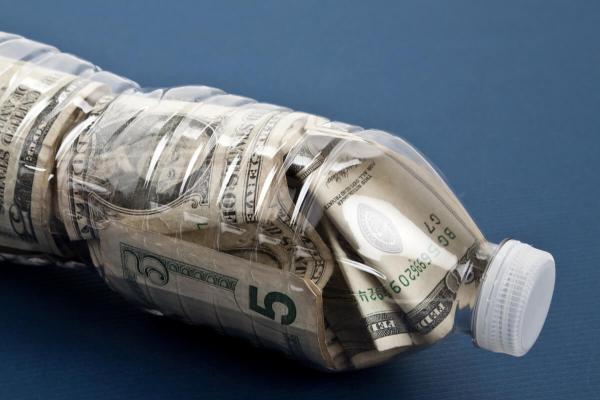Corporate raider T. Boone Pickens made billions as a Texas oil baron, but he’s betting that the real money will come from mining “blue gold”—water. Pickens owns more water than anyone in the U.S.—he’s already bought up the rights to drain 65 billion gallons a year from the Ogallala Aquifer, which holds the groundwater for much of the Great Plains. Almost all the Ogallala water—95 percent—is used for agriculture, but Pickens plans to pipe it down to Dallas, cashing in on the hotter-and-drier weather from climate change. (The result, according to an Agriculture Department spokesperson: “The Ogallala supply is going to run out and the Plains will become uneconomical to farm.”)
Pickens isn’t alone in his new role as a water baron. Multinationals such as Nestlé are buying up water rights, siphoning lakes, and selling our most precious resource to the highest bidder. Slick advertising has seduced many Americans into the mistaken belief that (expensive) bottled water is “purer” or “healthier” than tap water—and led to the annual consumption of 9.67 billion gallons of bottled water, with underserved Latinos and African Americans having the highest rates of bottled water use. And the Organization for Economic Cooperation and Development warns that by 2030 nearly half of the world’s population will inhabit areas with severe water stress.
As our authors explain, cities and towns across the country are in the midst of an epic fight to keep water as a public trust. Communities of faith have joined what they see as a battle for basic justice: Protecting the right of everyone, rich and poor alike, to the crucial stuff of life, water. —The Editors
THE UNITED STATES has one of the best public water supply systems in the world.
More than 250 million people count on local governments to provide safe drinking water. Over the last 40 years, federal, state, and municipal governments have worked together to improve and protect water resources. The Clean Water Act, the Safe Drinking Water Act, and the Endangered Species Act have kept the U.S. on target for preserving rivers, lakes, watersheds, wetlands, natural aquifers, and other sources of fresh water.
Great strides have been made in managing waste water and storm water. More than 90 percent of community water systems in 2012 met all federal health standards. Public water utilities have been a tremendously successful model for the U.S. and continue to keep drinking water safe, accessible, and affordable for all Americans.
It hasn’t always been this way.
During the 1800s, private companies controlled the water systems of several large U.S. cities—to dire effect. Because the companies were more interested in making a profit than providing good service, many poor residents lacked access to water. As a result, cholera outbreaks were common in poor neighborhoods; water pressure was sometimes too low to stop fires, which destroyed both homes and businesses.
By the turn of the 20th century, city governments, including Baltimore, Boston, New Orleans, and New York City, had taken over drinking water provision from private companies. The goal of government was to improve service, reduce waterborne diseases, and increase water pressure to better fight fires. New York City, for example, assumed control of its drinking water services from the bank and holding company called the Manhattan Company, the predecessor of JPMorgan Chase, after an outbreak of cholera killed 3,500 people and a devastating fire caused extensive property damage.
Read the Full Article

